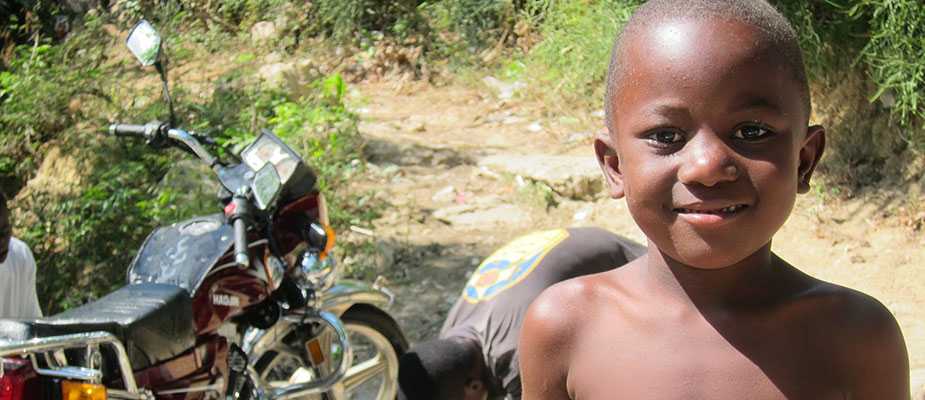Navigating Recovery in Haiti
Amber Dismer

A boy by a road in Haiti, where geographic information systems save lives and money for healthcare facilities (Source: CDC)
In a public health emergency or disaster, recovery should begin early and inform response efforts. It’s important to understand how a place has changed physically and how to get a healthcare system not only working again, but working better and more sustainably than before.
This is where geographic information systems (GIS) and GIS experts can help. GIS is used to collect, manage, visualize, analyze, interpret, and model geographic and health data, including roads, country administrative boundaries, health facilities, and the spread of diseases.
When Haiti began to rebuild its healthcare system after the 2010 earthquake, GIS was included early in recovery efforts. My colleagues and I trained staff from the Haiti Ministry of Health to use GIS to improve the national surveillance system and better target resources.
For example, in early 2016, we used GIS to optimize the national network for testing dried blood spot samples for HIV. The existing network operated on a hub-and-spoke model where healthcare facilities without the capacity to test (spokes) sent samples to facilities with the ability to test (hubs). Delivery was costly and variable, as facilities needed to send a person to transport samples to a nearby hub to be analyzed.
We wanted to look for ways to reduce transportation and personnel costs and to make the process faster – important factors to consider when resources are limited and saving someone’s life depends on a rapid diagnosis. In the old hub-and-spoke system, there were instances of riders picking up samples from one healthcare facility, but then driving right past other facilities that also needed to send samples.
Working with partners, we used a GIS model to study the path drivers took, mode of transport used, type and quality of the roads, hours a facility was open, and transfer time of samples and test results. Two times a week, drivers needed to pick up samples from nine department hospitals, bring them to the National Public Health Laboratory for HIV testing, and return results to the department hospitals via motorcycles, cars, or public transport. We determined the best order and combination of healthcare facilities that each driver should visit, creating a streamlined, efficient system.
The Haiti Ministry of Health and partners used this GIS model to reduce costs by 50% from the previous year, with CDC financing 30% of the total system cost. The Ministry of Health’s leadership and financial commitment ensured that this system could be launched and sustained. Improving a health system’s efficiency and impact is everyone’s responsibility, and GIS is a critical tool to help us all do that.
- Page last reviewed: August 26, 2016
- Page last updated: August 26, 2016
- Content source:


 ShareCompartir
ShareCompartir